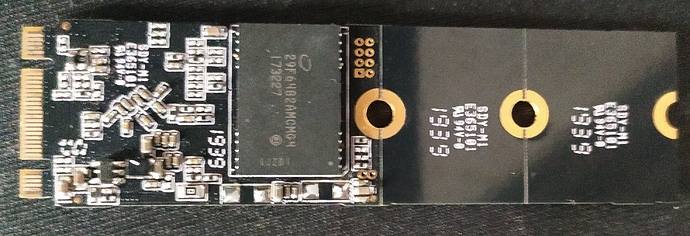I’ve come up with the name: “Radxa Rock Zero” for it.
Introduce the Radxa Zero
I have the 1GB version, how do I flash Android 9 the the SD card so it can boot from it?
The link you posted is broken
Thanks
Hi, where can I get hold of one?
[Buy - Radxa Wiki] (https://wiki.radxa.com/Buy)
RADXA Zero — ameriDroid] (https://ameridroid.com/products/radxa-zero)
I would love to port my AudioOS to it, which is based on Buildroot.
Some reference projects on my GitHub at https://github.com/DatanoiseTV
Did anyone test the transfer speed with an SSD (with the usb 3.0 hubs )?
And a read test from the SD-card, when booted from EMMC?
I potentially want to use the Radxa zero to backup photo’s / video’s from sd->ssd, I’m curious if it would actually be higher than usb 2.0.
Because probably the USB 3.0 transfer speed would be halved, if both the SD-card and the SSD would be connected to the usb 3.0 type c port via a hub?
thanks in advance!
SD is connected via SDIO which is not on USB bus so there is no bandwidth sharing.
You should be able to have decent speed from USB drive (tested with Zero 2 which is quite similar IO wise and got 348MB/s read), while SD is a quite slow interface by itself already, and the actual speed is also highly depending on your card. Last time I tested with a Sandisk Ultra 16GB and got 23.5MB/s read.
Oh I see you want to connect a card reader to USB instead of using onboard microSD port. In that case the speed will not be halved but will be bottlenecked by the slowest device i.e. your SD card. In above example even though microSD is not sharing bandwidth with USB the transfer between the two will still be limited by the slowest factor, which will be 23.5MB/s.
@RadxaYuntian exactly!
First off all, thanks a lot for testing, i might have been not fully clear:
I would like to use a usb type c dongle with 2 or more usb 3.0 port;
usb 3.0 SD UHS-I/II card reader so that I could utalize the maximum possible speed (in combination with a UHS-I SD card of course.
I would read from the SD-card and write to the SSD to maximize transfer speed.
Do you have such a fast SD card, usb 3.0 UHS-I SD card reader and fast SSD to test this?
Thanks you!
Ps: the zero 2, do you mean Radxa zero 2 or Raspberry pi zero 2?
I do not but the same principle apply. USB 3 is a duplex bus so you can in theory read at 5Gbps from 1 device while simultaneously write at 5 Gbps to another device. However, your real life speed will still be limited by your slowest device, which is the SD card. UHS-I is only up to 104MB/s, and UHS-II is 312MB/s, both are slower than the USB 3 NVMe drive I tested before.
TL;DR: don’t worry about it. It’s gonna be fine, or as good as how it works on your PC.
how to get one… ?
We are currently diagnosing a production issue which blocked us from shipping the device in mass. Once the production issue is fixed you can buy Radxa Zero from your regional distributor.
Thanks for this very informative post, chewitt.
If this is the situation for VDEC, I imagine Amlogic VENC has gotten even less attention and is unlikely to ever have proper drivers to work with ffmpeg?
VENC has no active development at the current time. In theory it’s a much more simple IP to write code around than the VDEC, but someone still needs to write code. I’d actually like to organise a few board vendors to fund this development; VENC seems to be a more common requirement for industrial use and while my personal needs with LibreELEC have little/no need for it, attracting more industrial customers will ultimately drive some investment into the Amlogic upstream codebase, which increases the likelihood of people funding work on VDEC (which I do care about). The challenge is finding people to do the work, relatively inexpensively. The gene pool of talent is small and focussed on a small number of commercial development houses. The old addage of “You can have it fast or cheap… pick one” applies. Pro developers require pro money. It will happen eventually, but the cheap model comes with no timescale.
Yes we should talk to more vendor and see if they’re interested in it.
As per our first vendor they do not might sharing some fund but we need more vendors to join in.
Zero has no M2 connector. Please use a USB adapter.
Many thanks.
eMMC adapter is can used for micro SD card ?
How I can boot from USB ?
Please, get me manual or link for tutor.
You should be able to use eMMC to microSD adapter like this, although I don’t have one right now to test for you.
Clear bootloader in eMMC , then flash your system image to a thumb drive and plugged in without any microSD card inserted. You should be able to boot into USB.
If you are still having issues you might need to manually fix your boot order with a serial cable.
Theres plans for an Pro Edition white wifi6E and 8 GB ??
